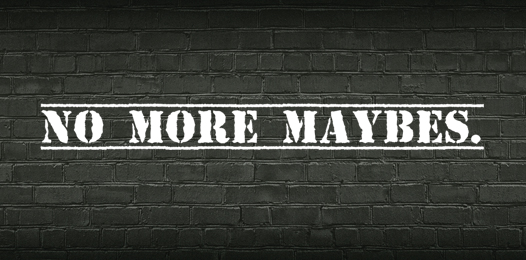
There are a number of convincing arguments that I could make about why you should outsource your identity verification (sometimes referred to as eKYC services), including:
- Focusing on your core competency. Whether you’re a bank, a telco, a healthcare organization or a sharing economy company, reliable identity verification is usually not part of your core skill set. Given the sophistication of today’s fraudsters, it’s exceedingly difficult to spot fake IDs, especially when they’re from countries or states that you’re not familiar with.
- Lacking the development resources. Creating an online identity verification system that inspects government-issued IDs for fraud and irregularities is not a trivial exercise.
- Ensuring genuine compliance. Most companies don’t want to absorb the financial and logistical overhead of complying with regulations such as KYC, AML and, more recently, GDPR.
- Offloading data breach risk. When it comes to digital identity verification, you end up collecting a bunch of personal data as part of the process. If there is a data breach on your side, it’s YOUR problem. If it’s on the third party’s side, it’s THEIR problem.
- Improving the user experience. It’s one thing to create a simple and fast process for identity verification, but it’s another to embed best practices from a user experience perspective (e.g., letting users re-submit an image if it’s blurry or shot in poor light).
- Baking in the latest technologies. Modern identity verification solutions leverage a variety of cutting-edge technologies, including artificial intelligence, machine learning, computer vision, OCR and biometric-based liveness detection. Trying to replicate the best-of-breed technologies into a DIY solution is a tall order.
- Reducing the amount of manual review. Better digital identity verification solutions should dramatically reduce the number of manual reviews that your staff has to inspect before finally approving or rejecting a new user.
Most of the organizations that knock on our doors consider these benefits table stakes. That’s why it’s surprising to discover that a number of solution providers deliver what they call a “caution” or a “suspect” for identity verification transactions. In fact, many companies that deploy these solutions are often surprised to learn this fact until after they sign the contract.
The harm in “maybes”
A “maybe” is the identity vendor’s admission that they can’t make the call (despite all the technology being brought to bear to help make that decision). This means that the solution provider could not verify the government-issued ID (e.g., the passport, driver’s license, etc.) or the identity by comparing the selfie to the picture on the ID document of the new account applicant.
Unfortunately, every “caution” requires some manual review by your own employees to determine whether these new customers are a real threat or not. What’s ironic is that so many of the so-called automated players are the same companies spawning the highest number of manual reviews because of the high number of “maybes” being returned.
To help quantify the real impact of “maybes,” we launched the “No More Maybes” campaign to help online companies understand the full cost of manual reviews. We created a simple online calculator that looks at the dramatic impact of increasing the number of manual reviews:
- Staffing Costs: The more manual reviews, the more staffing required to review those flagged transactions. These costs are relatively easy to calculate. Just multiply the number of incremental verifications by the average salary cost per verification review to determine the total staffing costs of manual review.
- Abandonment Costs: The second cost category is the cost of lost customers — that is, the opportunity costs of losing legitimate customers who bail on the online application process when they’re subject to long time delays caused by manual reviews. Playing with the calculator, you’ll quickly discover that the abandonment costs are usually far greater than the incremental staffing costs. Clearly, if you have a rapid response manual review team, the impact will be lessened. Likewise, if you fewer competitors (i.e., customers have fewer alternative options), the lesser the impact of time delays.
The math is undeniable.
It’s clear that modern digital businesses need to minimize the number of manual reviews and try to minimize customer abandonment while, at the same time, keeping out fraudsters. The best way to reduce the number of “maybes” is to ensure that your identity verification provider delivers a reliable “yes” or “no” decision on every verification decision.
How do you really know?
Not surprisingly, the only way to really know who’s delivering the fewest number of “maybes” is to do a side-by-side test (aka a competitive bake off), where you compare the verification accuracy and number of “maybes” returned by two or more identity verification vendors.
At Jumio, we stand by our quality. Because we’ve invested in the technologies, processes and people to deliver the highest verification accuracy in the industry, we’re launching the $10,000 “No More Maybes” Testing Challenge.
It’s pretty simple. If you perform a competitive test of Jumio against another other online verification solution, and Jumio loses the challenge based on verification accuracy, we’ll pay you $10,000. Terms and conditions naturally apply, so make sure to check out the Official Rules for details.
NOTE: Your organization is still eligible for the $10,000 reward even if you decide to sign with the other identity solution provider.
If you’re looking to say “no” to “maybes,” click the “Start a FREE Trial” button here to get started. If you’re not ready to test, but intrigued, check out the online calculator to better understand the trade-offs you’re making with low-cost, low-quality automated solutions versus the costs you will likely incur on the backend because of the excessive (and often unexpected) numbers of manual reviews.
Just say no … to “maybes.”
